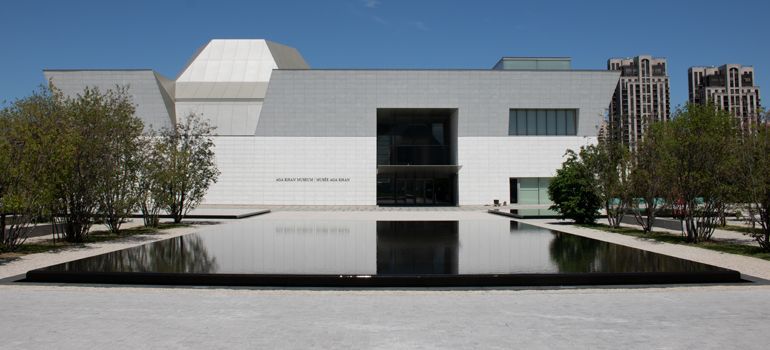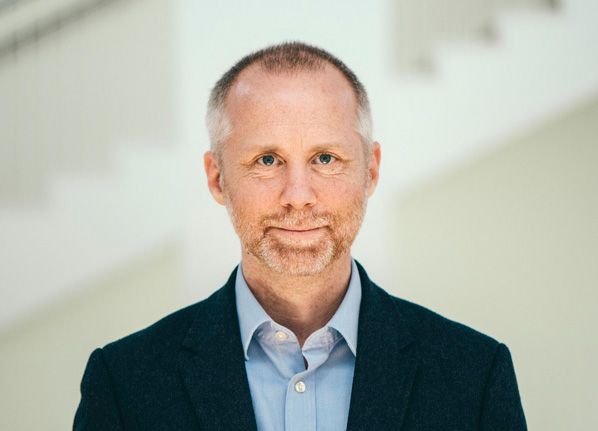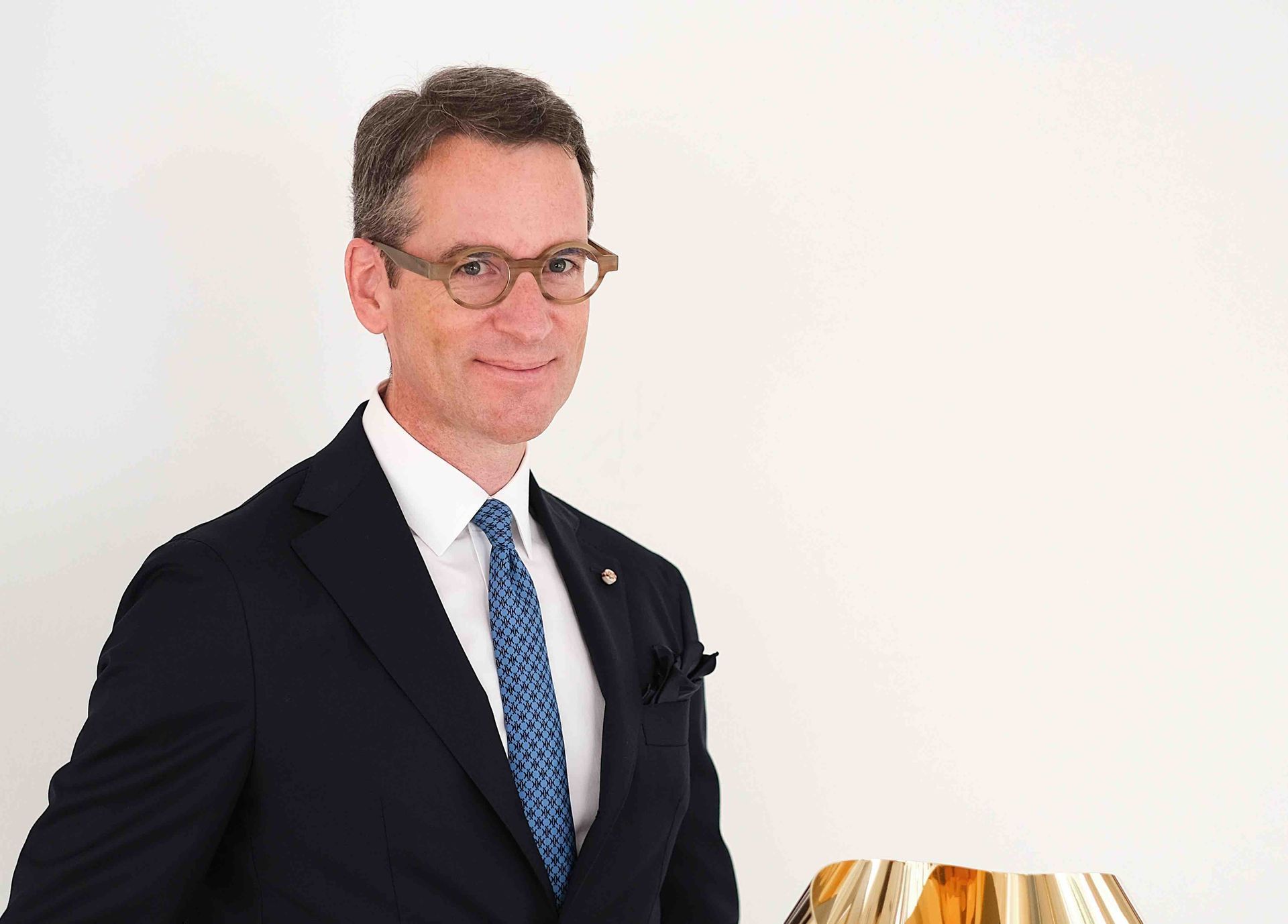
Dr. Ulrike Al-KhamisDirector and CEO of the Aga Khan Museum, ©Aly Manji
Dr. Ulrike Al-Khamis: "There is the unique mandate, which calls upon us to use our Collection as a catalyst for intercultural dialogue, bridging cultures through the arts, and fostering understanding and peacemaking across and beyond differences."
Dr. Ulrike Al-Khamis, the newly appointed Director and CEO of the Aga Khan Museum, is a recognised leader in the field of Islamic art and museology and a passionate advocate for the art and culture of the Muslim world. Her mission is to showcase the contributions of Muslim cultures and promote pluralism by bridging cultures, which is more urgent than ever today.
August 26, 2021
Interview Directory
DÜSSELDORF
Name: Dr. Ulrike Al-Khamis
Occupation: Director and CEO of the Aga Khan Museum. Over 20 years of experience as a curator and senior advisor for museum and cultural projects.
Location: Toronto
"I think the appreciation of beauty starts with the very small things that we often overlook in our daily lives, including an amazingly coloured flower on our way, a friendly smile from someone who passes by, an uplifting conversation, all the way to a lovingly prepared meal with friends or indeed a spectacular artwork. Beauty can be found anywhere we are prepared to see it."
You fell in love with Arab culture as a teenager, during a trip to Cairo. Can you recall a magical moment from your trip?
I can recall so many magical moments, from the sense of history over thousands of years —with its pyramids to the fantastic Islamic architecture — and the diverse ways in which the citizens of Cairo continue to live their lives within this historic environment, imbuing it with new, contemporary meaning. Encountering the people and the way they interacted with each other, their language, their food, their culture — everything was magical to me and drew me in. I moved freely through the city, having conversations with people and, despite being in this utterly unfamiliar, new environment, I felt strangely nested in the culture. I felt I belonged, even though I had never been there before.
Prince Sadruddin Aga Khan was an important collector of Islamic art. When you started your job as the Museum’s Director and CEO, what did you feel?
I feel deeply privileged to be working in such a fantastic museum, in a building designed by a Pritzker Prize-winning architect, Fumihiko Maki, with such a phenomenal internationally renowned Islamic art collection that holds over 1,200 artifacts from North Africa all the way to China. And then, of course, there is the unique mandate, which calls upon us to use our Collection as a catalyst for intercultural dialogue, bridging cultures through the arts, and fostering understanding and peacemaking across and beyond differences.
I also love the people that make the Museum what it is because, without our team, nothing in the Museum would come alive. And ultimately, the Museum is about people. It is about people bringing impactful stories and insights to people, our audiences. To me, the Aga Khan Museum provides a very special, empowering environment with a mission and mandate that are bigger than the sum of all the components we have to work with. It’s beautiful.
Finally, I am also really excited by the city of Toronto and its people. Their multicultural diversity and fascinating stories in many ways remind me of the artworks in our Collection.

The Aga Khan Museum in Toronto
Designed by Pritzker Prize winner Fumihiko Maki, the Museum’s architecture celebrates the concept of light. ©Tyler Jorge
What distinguishes Arab art?
Arab art really defies a strict definition because the term encompasses the contributions of so many different peoples that speak Arabic, so many different communities across the Middle East, and so many different artistic approaches.
In the context of the Museum, our Collection encompasses artistic expressions from areas well beyond the Arab and Arabic-speaking world. We have artworks from Africa, from Iran, from Central Asia, from South Asia, and from China, including many works on paper, ceramics, metalwork, and other media. So – beyond popular and often misleading definitions — the best way to look at the arts of the regions that we are concerned with, and the peoples that we are looking at, is actually starting with an individual artwork and allowing it to tell the multitude of stories it encapsulates.
"One of the characteristics that are always brought to the fore when discussing Islamic art is the love for calligraphy."
What distinguishes Islamic art?
The field of Islamic art is very unwieldy. As an academic discipline, it’s very complex and requires us to dive deep into the cultural, geographic, chronological, and indeed religious contexts behind a specific work of art.
One of the characteristics that are always brought to the fore when discussing Islamic art is the love for calligraphy — be it in Arabic, Persian, or Ottoman Turkish, to give just a few examples. This love springs from the fact that there is a close connection between calligraphy as an art form and the writing of the Qur’an, which Muslims believe is the materialization of the very word of God. This special connection is the reason that calligraphy grew into one of the Muslim world’s foremost art forms, and it has retained that status to this day.
In addition to that, there is always mention of the love for geometric patterns and floral designs. Both are often found in religious settings and are associated with invoking contemplation of the Divine. And then there is, of course, figural decoration and miniature painting, most commonly found in palace settings, symbolizing the wealth, power, connoisseurship, and intellectual sophistication of their royal patrons.
What is your personal concept of beauty?
I think the appreciation of beauty starts with the very small things that we often overlook in our daily lives, including an amazingly coloured flower on our way, a friendly smile from someone who passes by, an uplifting conversation, all the way to a lovingly prepared meal with friends or indeed a spectacular artwork. Beauty can be found anywhere we are prepared to see it.
What is your vision for the Museum?
My vision for the Museum is to make a difference in the world through everything we do. We have a mandate of showcasing the contributions of Muslim civilizations and their interconnectedness with the world, past and present. Through this mandate and through our intercultural storytelling and the exhibitions, programs, performances, and conversations we devise, we actively aim to contribute to a better, more pluralistic world for everyone. If someone visits the Museum and — through the Collection, our events, or an encounter with our staff — leaves transformed and more knowledgeable and empathetic with regard to other cultures and the ties that bind all of us across differences, then we have done our job.
Of all your duties as the Museum’s Director and CEO, which is your favourite?
One of my favourite aspects of my job – and there are many — is engaging with our audiences and sensing that we have inspired them with our work, have opened their eyes, and changed their perception of cultures they were unfamiliar with before visiting the Museum. It is also wonderful to see some of our visitors actively seek out the Museum as a space for inspiration, solace, hope, new horizons, and new perspectives, not only on the arts of the Muslim world, but on how art can be a conduit for unexpected intercultural conversations that imagine a more inclusive future with many diverse voices welcome at the table of humanity.
What is your next project with the Museum?
As we go into autumn, we are very much looking forward to our Hidden Stories: Books Along the Silk Roads exhibition, which will examine the book as a key medium for transmitting ideas, philosophies, religious convictions, and technologies across the Silk Roads. So many concepts and commodities and ideas that we are still familiar with today were carried over thousands of kilometres along intricate trading networks across Asia and beyond. Looking ahead to 2022, our seminal Image? The Power of the Visual exhibition will take a very innovative look at the use of images and their significance in our lives through the lens of Muslim cultures and civilizations, past and present.
----------
DR. ULRIKE AL-KHAMIS
She has almost 30 years' experience as a curator and senior consultant on museum and cultural projects. After completing a PhD in Islamic Art at the University of Edinburgh, Ulrike Al-Khamis was first Chief Curator of South Asia and the Middle East at the National Museums of Scotland and Curator of Muslim Art and Culture at Glasgow Museums. She then served as co-director of the Sharjah Museum of Islamic Civilization and senior strategic advisor to the Sharjah Museum Department in the United Arab Emirates.
"I have worked with Dr Al-Khamis for four years and it has been a pleasure. She is dedicated, creative and always willing to try something new. I believe that under her leadership the museum will play an important role in education and open new and exciting doors. She is a passionate advocate for the arts and culture of the Muslim world and its potential to build bridges between cultures - a task that is more urgent than ever."
Prince Amyn Aga Khan, Chairman of the Board of the Aga Khan Museum.

The Aga Khan Museum in Toronto
Designed by Pritzker Prize winner Fumihiko Maki, the Museum’s architecture celebrates the concept of light. ©Tyler Jorge

The Aga Khan Museum in Toronto
Designed by Pritzker Prize winner Fumihiko Maki, the Museum’s architecture celebrates the concept of light. ©Tyler Jorge
The Aga Khan Museum in Toronto
Designed by Pritzker Prize winner Fumihiko Maki, the Museum’s architecture celebrates the concept of light. ©Tyler Jorge
TOP STORIES
FUN, DÜSSELDORF
Read the interview about the very personal story of how RheinRiff came into being.
March 1, 2023
_____________________
VISIONS, ARCHITECTURE
MARCH 10, 2023
_____________________
CHECK THE THINGS YOU WANT TO THROW AWAY
HA Schult's Trash People at the Circular Valley Forum in Wuppertal on 18 November 2022.
NOVEMBER 19, 2022
_____________________
THE OPERA OF THE FUTURE
Düsseldorf, capital of North Rhine-Westphalia will receive the opera house of the future.
FEBRUARY 15, 2023
_____________________
LONDON
Opening: Lightroom, London's new artist home, shows: David Hockney
DECEMBER 2, 2022
_____________________
FLORENCE
The extraordinary museums of Florence in 2023.
JANUARY 1, 2023
____________________
DÜSSELDORF
DECEMBER 11, 2022
____________________
IN BEAUTIFUL A CORUNA
New exhibition of the Marta Ortega Pérez Foundation: "Steven Meisel 1993" .
DECEMBER 5, 2022
____________________
WORLDLEADER
How did ProWein manage to become No. 1 in contrast to other international trade fairs.
MARCH 15, 2023
____________________
INTERNATIONAL TOGETHERNESS
MARCH 8, 2023
____________________
TRAVEL
What major events in art, culture and society are we facing?
JANUARY 21, 2023
____________________
HOLLYWOOD
____________________
DISTANT WORLDS
Dieter Nuhr's paintings now in Senegal - "A Nomad in Eternal Transit"
DECEMBER 6, 2022
FAIR, DÜSSELDORF
Kylie Minogue at Prowein 2023. Read about Kylie's wine adventure in her own words.
MARCH 22, 2023
_____________________
RELATED TALKS






